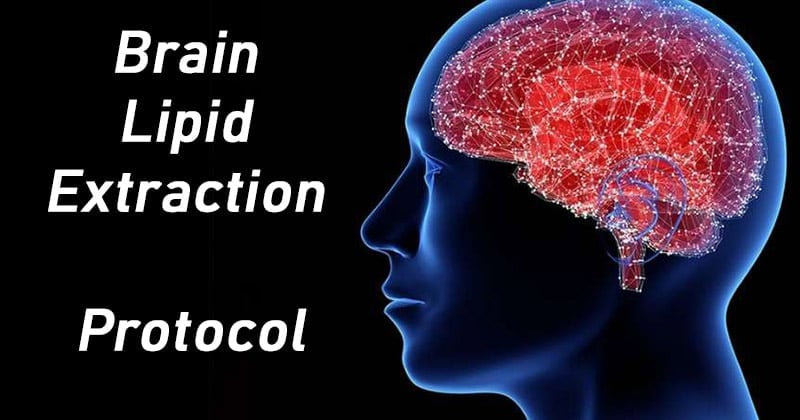- “Brain lipid extracts” refers to a lipid mixture extracted from the brain tissue of animals.
- It has been found that such brain lipid extracts contain a mixture of long chain polyunsaturated fatty acids (PUFAs) that have four or more double bonds and closely resemble the mixture of PUFAs found in human breast milk.
- The mixture of PUFAs typically includes arachidonic acid (ARA), docosahexaenoic acid (DHA) and docosatetraenoic acid (DTA).
- These PUFAs are important structural lipids that are required for normal development of human infants.

Interesting Science Videos
Principle of Extraction of Brain Lipid
The lipids from brain are generally extracted by a mixture of chloroform and methanol, by methods that are variations of one originally described by Folch and coworkers. In most procedures, the tissue or homogenate is treated with 19 volumes of a 2:1 (v/v) mixture of chloroform–methanol. A single liquid phase is formed, leaving behind a residue of macromolecular material, primarily protein, with lesser amounts of DNA, RNA and polysaccharides. The subsequent addition of a small amount of water to the CHCl3–methanol extract leads to separation into chloroform-rich and aqueous methanol phases; the lower chloroform phase contains the lipids, whereas low-molecular-weight metabolites and polar lipids, such as gangliosides, are in the upper phase. If the lower phase is evaporated to dryness and taken back up in a lipid solvent such as chloroform, proteolipid protein remains undissolved and can be removed at this point. Gangliosides can be extracted from the aqueous phase by repartitioning into an apolar solvent. Acidic phospholipids such as the polyphosphoinositides are poorly extracted at neutral pH, so it is necessary to acidify the initial chloroform–methanol mixture for their recovery. Lipid classes are separated from a lipid extract by thin-layer chromatography (TLC), ion-exchange chromatography or high-performance liquid chromatography (HPLC) using silicic acid as the stationary phase.
Materials Required for Extraction of Brain Lipid
Brain tissue sample
Chloroform, methanol, 0.9% NaCl solution
Shaker, Funnel, Filter paper, Centrifuge, Vortex
Procedure of Extraction of Brain Lipid
The most popular extraction procedure is that of Folch.
- Chop and homogenize 100 g of fresh brain tissue. The tissue is homogenized with chloroform/methanol (2/1) to a final volume 20 times the volume of the tissue sample (1 g in 20 ml of solvent mixture).
- After dispersion, the whole mixture is agitated during 15-20 min in an orbital shaker at room temperature.
- The homogenate is either filtrated (funnel with a folded filter paper) or centrifuged to recover the liquid phase.
- The solvent is washed with 0.2 volume (4 ml for 20 ml) of water or better 0.9% NaCl solution.
- After vortexing some seconds, the mixture is centrifuged at low speed (2000 rpm) to separate the two phases.
- Remove the upper phase by siphoning and kept it to analyze gangliosides or small organic polar molecules. If necessary, rinse the interface one or two times with methanol/water (1/1) without mixing the whole preparation.
- After centrifugation and siphoning of the upper phase, the lower chloroform phase containing lipids is evaporated under vacuum in a rotary evaporator or under a nitrogen stream if the volume is under 2-3 ml.
Expected Result of Extraction of Brain Lipid
A crude extract of brain lipids belonging to different lipid classes.
Reference
- Folch, J.; Lees, M.; Sloan Stanley, G.H. (May 1, 1957). “A Simple Method for the Isolation and Purification of Total Lipides from Animal Tissues”. Journal of Biological Chemistry. 226: 497–509.
- https://www.ncbi.nlm.nih.gov/books/NBK28239/
- http://www.cyberlipid.org/extract/extr0005.htm
- http://lipidlibrary.aocs.org/History/content.cfm?ItemNumber=40362
- https://link.springer.com/referenceworkentry/10.1007%2F978-94-007-7864-1_89-1
- https://patents.google.com/patent/WO1992022291A1
- http://www.jbc.org/content/226/1/497.full.pdf
